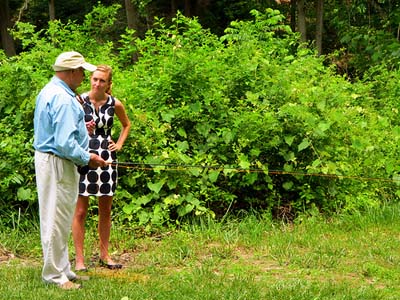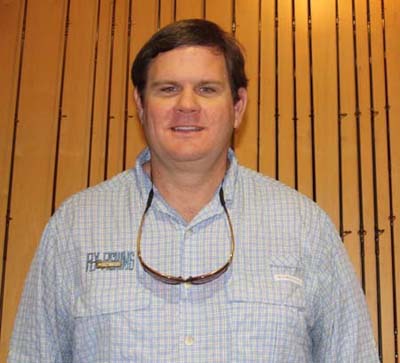Tune up Your Cast. Dust off your fly rods between fishing trips to sharpen your skills
[dropcap]C[/dropcap]asting is central to fly fishing. If you can’t cast well, it matters little if you have the best flies, and are in the best fishing hole at the best time. In short, you will not enjoy the sport. Ask any fly fishing guide what kills a client’s chance at success and you will usually hear: “Poor casting.”
It puzzles me that so few fly fishers spend time improving their casting. Hunters go to firing ranges and serious golfers hit the driving range. Why don’t fly fishers practice? They spend lots of money on boats, rods, reels, travel and guides, only to fail miserably on the water. I would suggest the following simple exercises a few times a week. They will do wonders for your casting.
Before You Haul…
Most fly casters who fish in salt water learn to double haul to increase line speed and distance. It is a fundamental casting technique, and certainly helps one deal with windy conditions and big flies, and can ultimately eliminate the need for excessive false casting that can mean missed shots when sight casting. However, for the beginner, the double haul can be a crutch and only compensates for poor, basic casting skills.
Do not overpower the rod—let it work for you
I suggest that you try practicing with your rod hand alone. Start with a short length of line outside the rod tip at first—about 25- to 30-feet — and try to form tight, uniform loops. Strive to make to the top and bottom leg of the loop parallel. Once you accomplish that, “tighten” them up a bit. Keep your wrist locked; if you break your wrist during the forward or back cast, you will only open the loop.
At this point you are ready to do this drill with more fly line outside the rod tip. The more line you can keep in the air, the more the rod will bend (load), allowing you to shoot the line farther. Concentrate on moving your rod hand, and thus the rod tip, through a straight line path with smooth acceleration. At first you will probably be surprised by how poor your loops look. Master these rod-hand mechanics before you attempt to double haul again.
Speed Up and Stop
Many fly casters struggle to stop the rod at the end of the forward and back casts. The best casters understand that long-distance casting depends on line speed and tight loops, both of which are accomplished with a crisp speed-up and abrupt stop of the rod. But it is difficult to describe to a casting student how stopping a rod feels, and many confuse the stop with “snapping or punching” at the end of the cast.
To master the speed up and stop, start with practice with 20- to 25-feet of line outside the rod tip. On your forward cast, move your hand forward smoothly, accelerating as you reach the end of your stroke and then “tense up” from your hand to your shoulder, and for lack of a better term, freeze. This abruptly stops the rod; you will feel the rod flex as it unloads. The more you feel the rod flex at the stop, the better it unloads and transfers energy to the line so that you can achieve maximum distance for your effort. If you sight fish, you will also be able to load the rod quicker to get the fly to a fish. Do this on your back cast, too.
The more line you can hold in the air, the deeper the load on the rod, and the more the rod can contribute to the cast. It is that simple. You will at first be surprised at how little extra effort it takes to cast 70- to 80-feet in comparison to say, 40-or 50-feet, when you stop the rod correctly.

Lefty Kreh teaches a lady dressed for cocktails about the finer points of fly casting. Image by www.backwaterangler.com
Short Sessions=No Fatigue
Finally, practice these often but for shorter a duration. A 2-hour marathon casting session does little more than tire you out. After a half-hour or 45 minutes, most beginners or intermediate-level casters tire and reinforce bad habits. Practice several times a week for 15 to 30 minutes and your casting will improve quickly. Cast on land if you must, but do it on the water if at all possible. And always cast with a balanced outfit. Cast a line rated for the rod, or perhaps over-line by one size. Cast the leader you most often fish with, and tie on a fly. If casting on land, cut off the hook at the bend.
[information]
If in South Florida contact David Olson for casting instruction at the Fly Shop of Miami . . .
Wanda Taylor (featured Image for this story) is a Federation of Fly Fishers Certified Casting Instructor. Website . . .
[/information]








